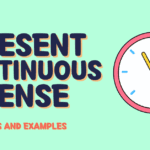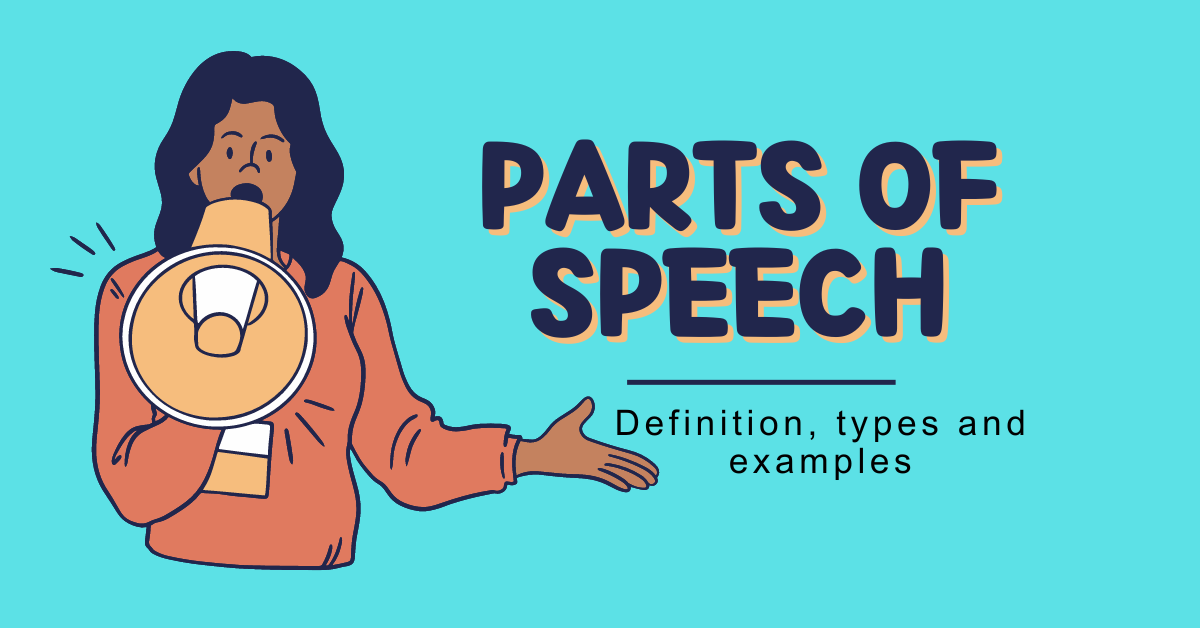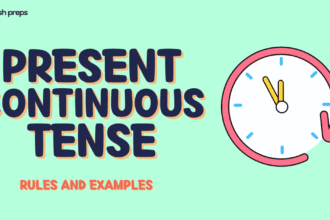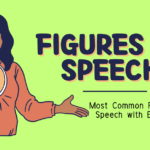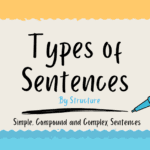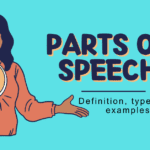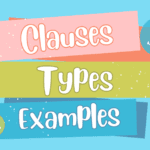In English grammar, the parts of speech are the categories to which words are assigned based on their function in a sentence. There are eight parts of speech in the English language: nouns, pronouns, verbs, adjectives, adverbs, prepositions, conjunctions, and interjections. Each part of speech has a specific role in a sentence and serves a specific purpose.
Understanding the different parts of speech and their functions can help you analyze and construct sentences, and improve your communication skills.
Eight Parts of Speech in English Grammar
There are eight parts of speech in the English language:
Noun
A noun is a word that is used to name a person, place, thing, or idea. It helps us identify and talk about the people, objects, and concepts in our world. Nouns can be proper nouns (e.g. John, New York) or common nouns (e.g. boy, city).
Let’s break it down further:
- Person: Nouns can be used to talk about people. For example, names like “John” or “Sarah” are nouns because they represent specific individuals. The word “teacher” is also a noun because it refers to a person who teaches.
- Place: Nouns can also represent locations or specific places. For instance, “Paris” or “school” are nouns because they name particular places. They help us understand where things are happening.
- Thing: Nouns can refer to objects or things. For example, “table,” “book,” or “car” are all nouns because they represent physical items that we can see and touch.
- Idea: Nouns can even represent abstract concepts or ideas. Words like “love,” “freedom,” or “knowledge” are nouns because they represent things that exist in our minds but cannot be seen or touched.
Examples in Sentences:
- Ronaldo is a good player.
- Kate has a lovely doll.
- Dubai is a beautiful city.
Pronoun
A pronoun is a word that we use to replace a noun. Instead of repeating the noun over and over again, we can use a pronoun to refer to it. Pronouns can be personal pronouns (e.g. I, you, he, she, it), possessive pronouns (e.g. mine, yours, his, hers), or reflexive pronouns (e.g. myself, yourself, himself, herself).
Let’s say, you have a friend named Emily. When you talk about Emily, you can use her name, saying things like “Emily is kind” or “Emily is smart.” But instead of saying “Emily” every time, you can use a pronoun like “she” to refer to her. So you could say “She is kind” or “She is smart.”
Examples:
- This is my father. He is a teacher.
- My mother is kind. Everybody likes her.
- I made this cake myself.
Using pronouns makes our language smoother and easier to understand. They help us refer to people, objects, or things without repeating their names all the time.
Verb
A verb is a word that shows an action or a state of being. It describes what someone or something does or how they exist. Verbs bring action and movement to our sentences.
Let’s break it down further:
- Action: Verbs can represent actions that people or things do. For example, words like “run,” “jump,” “eat,” or “write” are verbs because they describe specific actions that someone or something is performing. So when you say, “I run,” or “The dog jumps,” the verbs “run” and “jumps” show the action taking place.
- State of being: Verbs can also express a state of being or existence. For instance, words like “is,” “am,” “are,” or “was” are verbs because they describe how someone or something exists or what they are like. When you say, “I am happy,” or “They were excited,” the verbs “am” and “were” express a state of being or existence.
Verbs are crucial for constructing meaningful sentences because they allow us to describe actions, events, and conditions. They help us convey what is happening, what has happened, or how things are. Without verbs, our sentences would lack the action and dynamism needed to communicate effectively.
Remember, verbs make sentences come alive by showing what is happening or how things are. They are like the engines that power our language!
Examples:
- Cows eat grass.
- Mary enjoys singing.
- Most children learn very fast
- He became a doctor.
>>Read more about Verbs
Adjective
An adjective is a word that describes or gives more information about a noun. It helps to paint a clearer picture in our minds by adding details and qualities to the things we talk about.
Here’s a simple explanation:
Imagine you have a fluffy cat. The word “fluffy” is an adjective because it describes how the cat looks. It helps you imagine the cat’s soft and thick fur. Similarly, if you say you have a big house, “big” is the adjective that tells us about the size of the house.
Adjectives can describe many different qualities, such as size, color, shape, texture, taste, and more. They help us express our thoughts and create a more vivid and specific image of the things we are talking about.
Here are a few more examples:
- A delicious meal: “Delicious” describes how the meal tastes.
- A beautiful flower: “Beautiful” tells us about the appearance of the flower.
- A tall tree: “tall” describes the height of the tree.
By using adjectives, we can add more detail and make our language more interesting and descriptive. They help us express our opinions, observations, and preferences by giving more information about the nouns they describe.
Adverb
An adverb is a word that describes or gives more information about a verb, an adjective, or another adverb. It tells us how, when, where, or to what extent something happens. Adverbs help us understand the way actions are performed or qualities are expressed.
Let’s break it down further:
- Describing verbs: Adverbs can describe how an action is performed. For example, if someone runs quickly, “quickly” is the adverb because it tells us the manner or speed of the action. Adverbs can answer questions like “How?” or “In what way?”
- Describing adjectives: Adverbs can also describe or modify adjectives, providing more information about the qualities they represent. For instance, if you say someone is extremely intelligent, “extremely” is the adverb because it shows the degree or intensity of the adjective “intelligent.” Adverbs can answer questions like “To what extent?”
- Describing other adverbs: Adverbs can even describe or modify other adverbs, adding further detail or intensity to their meaning. For example, if you say someone speaks very loudly, “very” is the adverb that describes the intensity of the adverb “loudly.”
Adverbs can tell us more about the time, place, manner, frequency, degree, or reason behind an action or quality. They help us provide a fuller description of what is happening or how something is done.
Here are a few more examples:
- She sings beautifully. “Beautifully” describes how she sings.
- They arrived late. “Late” describes the time of their arrival.
- He writes quite slowly. “Slowly” describes the manner in which he writes.
By using adverbs, we can add more information, clarify details, and give a better understanding of actions, qualities, or circumstances. They help us communicate more precisely and vividly.
Preposition
A preposition is a word that shows the relationship between a noun (or pronoun) and another word in a sentence. It helps us understand where something is in relation to something else or how things are connected.
Let’s break it down further:
- Location: Prepositions can describe where something is located. For example, words like “in,” “on,” “at,” or “under” show the position of an object. If you say, “The book is on the table,” the preposition “on” tells us the relationship between the book and the table.
- Direction: Prepositions can indicate the direction of movement. Words like “to,” “from,” or “towards” show where someone or something is going. For instance, if you say, “She walked to the park,” the preposition “to” indicates the direction of her movement.
- Time: Prepositions can also express time-related relationships. Words like “before,” “after,” “during,” or “at” show when something happens. For example, if you say, “We’ll meet at 5 o’clock,” the preposition “at” indicates the specific time of the meeting.
Prepositions help us understand the spatial, temporal, or directional connections between different parts of a sentence. They provide crucial information about the location, movement, or time frame of people, objects, or events.
Here are a few examples:
- She sat beside her friend. “Beside” shows the position of her sitting.
- The cat jumped off the table. “Off” shows the direction of the cat’s movement.
- We’ll have dinner after the movie. “After” indicates the time relationship between the movie and dinner.
By using prepositions, we can provide context and clarify the relationships between different elements in a sentence. They help us paint a more complete picture and make our language more precise and meaningful.
More Example Sentences:
- He is going to New York.
- There is an old castle on the hill.
- There are seven days in a week.
Conjunction
A conjunction is a part of speech used to connect words, phrases, or clauses in a sentence. It helps to establish relationships between different elements, making the sentence more coherent and creating logical connections between ideas. Conjunctions play a crucial role in forming complex sentences by joining various components together. They can connect similar ideas (coordinating conjunctions) or show relationships between dependent and independent clauses (subordinating conjunctions).
Here are two main types of conjunctions:
- Coordinating conjunctions: These conjunctions connect words, phrases, or independent clauses that are of equal importance and have a similar grammatical structure. There are seven coordinating conjunctions in English: For example:
- and: I like apples and oranges.
- but: She studied hard, but she still failed the exam.
- or: Would you like tea or coffee?
- nor: He didn’t eat breakfast, nor did he have lunch.
- yet: It was raining, yet they decided to go for a walk.
- so: She practiced every day, so she improved her skills.
- for: He worked hard, for he wanted to succeed.
- Subordinating conjunctions: These conjunctions connect an independent clause with a dependent clause, which means the dependent clause cannot stand alone as a complete sentence. Subordinating conjunctions indicate the relationship between the two clauses, such as cause and effect, time, condition, contrast, etc. For example:
- because: She stayed home because it was raining.
- when: I will call you when I arrive.
- if: He will come if he has time.
- although: Although it was late, they continued the party.
- while: She read a book while waiting for the bus.
Conjunctions are essential for constructing well-structured sentences and paragraphs. They allow us to convey complex relationships between ideas and enable smooth and logical transitions between different parts of a sentence.
Interjection
An interjection is a word or phrase that expresses a sudden or strong emotion or reaction. It is like a burst of feeling that we use to convey our immediate thoughts or sentiments. Interjections add color, emphasis, or an emotional touch to our language.
Let’s break it down further:
- Expressing emotions: Interjections capture our emotions and reactions in a concise way. They can convey excitement, surprise, joy, pain, frustration, or any other intense feeling. For example, words like “Wow!”, “Ouch!”, “Yay!”, “Oops!”, or “Oh no!” are interjections because they express our immediate responses.
- Stand-alone words or phrases: Interjections are often used as stand-alone words or phrases, independent of the rest of the sentence. They can be inserted before, after, or even within a sentence to convey the emotion we are experiencing. For instance, if you say, “Yikes! That was close,” the interjection “Yikes!” adds a sense of surprise or fear to the statement.
- Punctuation and tone: Interjections are typically punctuated with an exclamation mark to emphasize the strong emotion being expressed. They can also be influenced by the tone of our voice, such as when we raise our voice to convey excitement or lower it to show disappointment.
Interjections bring life and immediacy to our language. They allow us to express our unfiltered reactions or feelings in a vivid and engaging way.
Here are a few more examples:
- Yippee! I won the game! “Yippee!” expresses excitement and joy.
- Ouch! That hurt! “Ouch!” conveys pain or discomfort.
- Oh well, I guess it’s not meant to be. “Oh well” shows resignation or acceptance.
By using interjections, we can add emotion, energy, and personal expression to our words. They help us communicate our feelings and connect with others on an emotional level.
We briefly discussed the parts of speech with examples. Each part of speech has different types, and we will explain each in detail. Here’s an example sentence using all eight parts of speech.
Example Sentence using all Eight Parts of Speech
I (pronoun) quickly (adverb) ran (verb) to (preposition) the store (noun) and (conjunction) bought (verb) a big (adjective), expensive (adjective) bag of chips (noun). Wow (interjection), that was a lot of money (noun)!
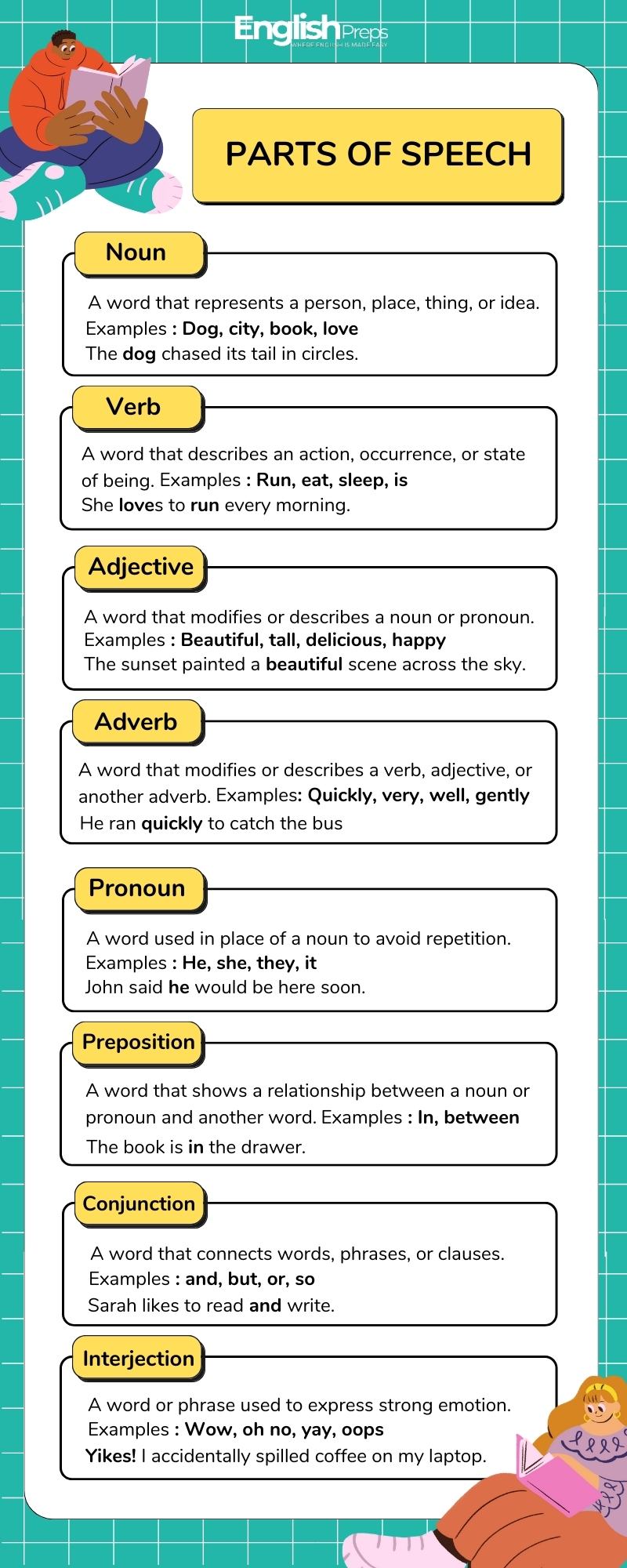
When a word functions as different parts of speech?
Sometimes, a word can function as different parts of speech depending on its usage and context within a sentence. This versatility arises because words can have multiple meanings and can be applied in various ways. Here are a few examples to illustrate how a word can be different parts of speech:
Example word: “Run”
- Noun: “He went for a run in the park.” Here, “run” functions as a noun, representing an activity or exercise.
- Verb: “She likes to run every morning.” In this sentence, “run” acts as a verb, describing the action of engaging in the activity.
Example word: “Fast”
- Adjective: “He is a fast runner.” In this case, “fast” functions as an adjective, describing the quality of being quick or speedy.
- Adverb: “She ran fast to catch the bus.” Here, “fast” is an adverb, modifying the verb “ran” to indicate the manner or speed of the action.
Example word: “Hard”
- Adjective: “The test was hard.” In this sentence, “hard” acts as an adjective, describing the difficulty level of the test.
- Adverb: “He worked hard to achieve his goals.” Here, “hard” functions as an adverb, describing the intensity or degree of effort exerted.
These examples demonstrate how the same word can have different roles based on its function within a sentence and the meaning it conveys in that particular context. Understanding the broader context, sentence structure, and the intended meaning is key to correctly identifying the part of speech a word is fulfilling in a given sentence.
Open and closed word classes
Open and closed word classes are categories used in linguistics to classify words based on their ability to accept new members or their resistance to new additions. Parts of Speech falls into these two categories.
Open Word Classes:
Open word classes are categories of words that have the potential to grow and accept new members over time. They are characterized by their flexibility and ability to create new words. The four main open-word classes are:
- Nouns are open-word classes because new nouns can be coined or added to the language as new concepts or objects are discovered or created. For example, “deep state,” “genocidaire,” “easybeat,” and “depthness” are relatively recent additions to the English language.
- Verbs are open word classes because new verbs can be formed or added to the language as new actions or concepts emerge. For instance, “genocide” and “kinkle” are examples of relatively recent verb formations.
- Adjectives are open word classes because new adjectives can be created or borrowed to describe new qualities or characteristics. Examples of newer adjectives include “snitchy,” “plasmonic,” and “anticipatory.”
- Adverbs are open word classes because new adverbs can be formed or added to the language to describe new manners, degrees, or circumstances. For instance, “folklorically,” “crazily,” and “certifiably” are relatively recent adverb formations.
Closed Word Classes:
Closed word classes are categories of words that have a limited number of members and are resistant to the addition of new words. They have relatively stable membership and do not readily accept new members. The three main closed word classes are:
- Pronouns have a fixed set of members that represent specific categories, such as personal pronouns (e.g., “he,” “she,” “it”), possessive pronouns (e.g., “mine,” “yours”), and reflexive pronouns (e.g., “myself,” “yourself”).
- Prepositions have a fixed set of members, and new prepositions are rarely added to the language. Examples of prepositions include “in,” “on,” “at,” “under,” and “between.”
- Conjunctions have a limited set of members, and new conjunctions are not typically added to the language. Common conjunctions include “and,” “but,” “or,” and “because.”
These closed-word classes have relatively stable membership and do not readily accept new words because they serve specific grammatical or structural functions in the language.
Tips to figure out Parts of Speech
When trying to figure out parts of speech in a sentence, there are several tips you can use. Here are some common approaches:
- Understand the role of the word: Parts of speech are determined by the function of a word within a sentence. Start by understanding the role the word plays—does it describe, name, connect, or modify something? This can give you a clue about its part of speech.
- Identify word endings: Many words have specific endings that indicate their part of speech. For example, nouns often end in -tion, -ment, -ity, or -ness; verbs can end in -ing or -ed; adjectives may end in -ful or -ous. Pay attention to these patterns.
- Look for determiners: Determiners (such as articles like “the” or “a,” possessive pronouns like “my” or “your,” or demonstratives like “this” or “that”) are often indicators of nouns. If a word is preceded by a determiner, it’s likely a noun.
- Consider the context: Context can provide valuable clues about a word’s part of speech. Look at the words that surround it and the overall meaning of the sentence. For example, if the word is an action or state, it’s likely a verb; if it describes or modifies a noun, it’s likely an adjective.
- Word order: In English, word order often indicates the part of speech. For example, articles (a, an, the) usually come before nouns, while adjectives often come before nouns they modify.
- Consult a dictionary or grammar resource: When in doubt, consult a dictionary or a reliable grammar resource. They can provide definitions, examples, and the specific part of speech for a given word.
- Practice with sentence diagrams: Diagramming sentences can help you visually represent the structure and relationship between words in a sentence. This can assist in identifying the part of speech of each word.
- Learn the common patterns: Each part of speech has certain characteristics and patterns. By familiarizing yourself with these patterns, such as typical word order or common word formations, you can improve your ability to identify parts of speech.
Remember that figuring out parts of speech requires practice and a good understanding of grammar rules. Over time, you’ll become more proficient at recognizing the different parts of speech in sentences.



